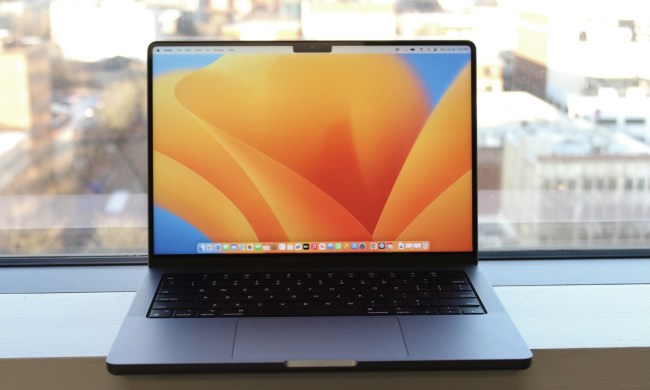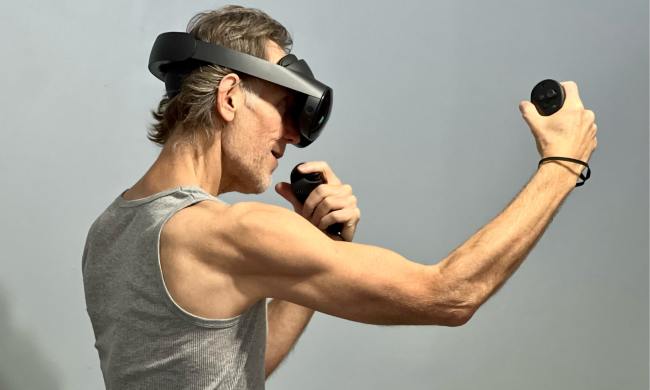Picking a Portable Media Player: Going Non-iPod and the Improved Zune II
For the last several years, I’ve often wondered if the companies competing with Apple in the MP3 player space were blind, deaf, and dumb.
Apple products weren’t just better – they generally slam-dunked the products that competed with them. One of the most disappointing efforts was Microsoft’s first Zune. While MS did a good job with accessories, stores and product specifications, well… let’s just say the actual product wasn’t very attractive, and my first reaction upon seeing it was that it wouldn’t sell very well. (I’m actually understating my reaction, and I’ll likely use this as an example of bad executive oversight for much of the rest of my life.) But hey – that was then and this is now, and the world is vastly different this year.
The upshot being as follows: For the first time since the beginning of the iPod, Apple faces some very real competition at point when the company is in the middle of an unfortunately-timed line transition which lowers the competitive bar, making Apple more vulnerable than they normally would be. Let’s take a look at the choices you’ll have this quarter as we ramp up towards the biggest buying season of the year.
Apple: In Transition
Apple has historically been near-bulletproof with their iPod line, but eventually, any product has to evolve. Technology being what it is though, the entire line can’t evolve at once, and that creates product conflicts and bad choices when this kind of transition happens. Ideally, you’d want to do a transition like this in the 2nd quarter so it was far enough away from the 4th so as not to cause people to delay purchasing and during a slow quarter at that, so the resulting product confusion would do little damage to annual sales. As is, the 4th quarter is the worst time to make this sort of change, but these things often have to happen when the technology is ready and not when you find them most convenient. The evolution, of course, is to the new iPhone MacOS-based interface that will eventually be, in one form or another, on all Apple products (possible including the release of the MacOS on PCs after Leopard).
There are, as a result of the transition, two exposures with the iPod line; the biggest is between the iPod Touch and the iPod classic. If you want the Touch, you pay a premium (up to $400 for the 16GB vs. $250 for the 80GB model), give up storage capacity and trade battery life in exchange for the next-generation iPod interface. With the classic, you take a pass on that snazzy new interface to gain storage space and battery life. That’s called an ugly choice, because buyers in this price range tend to want all of the above features and, if they can’t get it, will either defer their purchase or buy something else entirely.
The second exposure is the new Nano. Initially, I thought Apple had really screwed up with this product, but it’s actually rather nice. Granted, it doesn’t yet have the new touch-driven interface either. Nonetheless, more to the point, the way Apple is presenting the Nano makes it look like Steve Jobs didn’t like the product and he is trying to make a point by making sure potential customers don’t either. Or the firm may simply be trying to force buyers to move up-market to the iPod Touch. Now, I may be seeing a conspiracy where the real answer is Apple is simply screwing up the Nano marketing. After all, even Apple does this from time to time, but the mistake seems so obvious to me (even the Apple folks are calling the thing "chubby") that you’d think if it was a screw up they would have fixed how the product was presented by now.
Anyhow, the best deal in the Apple line is the Shuffle: If all you want to do is listen to music (and that is true of most), it’s your obvious best choice. The Shuffle is inexpensive, you don’t have to worry that much if you lose it (and it clips onto you so you’d really have to work hard to do so), the device has plenty of storage capacity for most things you’ll do and also sports great battery life (and is darned near indestructible). We have every iPod through the classic and the Shuffle gets the most use by far.
That said, this year, unlike any other, there are strong alternatives for every one of the core products in Apple’s base iPod line. Let’s look at the high and middle ranges of the iPod family this week and kill two birds with one stone by comparing the best-in-class to the new Zune offerings due in a few weeks.
Zune II 80 GB vs. Archos 705
If you are going to buy a portable product with a hard drive for movies, screen size is a big requirement, and with flash-based players now ballooning to the 8GB to 16GB range (recall the original iPod was only 5GB), music-centric folks would be better off with a flash-based player. Big hard drives are for video and that means a big screen. You can put 45,000 music files on an 80GB drive, around 7000 on a 16 GB drive, and 3500 on an 8GB drive. For movies you can store about 200 with a 160GB drive, which is why you need this capacity for video – the files are massive.
The segment leader in my mind here is the Archos 705, as it has either an 80 or 160GB hard drive; Wi-Fi with a browser that will play Flash video (offering full YouTube access as opposed to limited access); a 7" screen (the less expensive 605 model has a 4.3" screen); stereo speakers; and a built-in PVR for capturing TV shows and movies off the air. You can even get a little helmet camera so you can record your adventures out in the real world. This sets the bar, and for video, is an arguably better solution than the iPod Classic. You can even get an Opera Bowser for this thing and use it to access the web. It is $400 for the 80GB and $500 for the 160GB model, so it is also more expensive, but the extra cash gets you vastly bigger picture size while still being smaller than a portable DVD player.
A couple of cautions on the Archos players: The PVR evidently has issues with Motorola-branded cable boxes (if you plan on using this function) and dial-in support is horrid, with folks reporting up to 6-hour hold times on the Amazon forums. Fortunately, the product actually works rather well otherwise.
The Zune II hard drive-based player also has Wi-Fi and can sync off the network, but given that this player is more ideal for movies, the solution still lacks a clear video focus outside of music videos. It has a 3.2" screen and is about the same size as the iPod classic, but has a better screen when it comes to this sort of content. It is also vastly better looking than the old Zune, and has a new, more uniquely Microsoft-flavored touchpad interface that is intuitive and comparatively easy to use. Consider it a good alternative to the iPod classic, but well off the mark for where the Archos 605 and 705 deliver in screen size. iTunes also currently supplies better video content access seamlessly, but you’ll need to learn how to rip DVDs to get much movie content into any player. Still, extended video support in terms of content will be coming from Microsoft and the good news is it won’t require a hardware upgrade, as the device consumes video just fine. It costs a vastly more affordable $250 (right on top of the iPod Classic, and it has WiFi) making it an easier gift to give, but I think the flash-based Zunes are the better choice this year.
Zune II 8 GB vs. SanDisk Sansa View
Here the matchup is rather close, as it appears the best-in-class (before we saw the new Zune) was the SanDisk Sansa View. The SanDisk comes with a 2.4" screen and up to 16GB of storage, it has a built-in FM radio and a microphone so you can use it as a recorder if you need one (handy for school), and has a memory expansion slot so you can add additional storage capacity. The user interface is simple and workmanlike, but the device itself doesn’t feel as luxurious as I would like for something in the $200 range. The Sansa View also works best with the Rhapsody music service which has some advantages in the class, and is subscription-based and will work without a PC for some of the home media systems like the Sonos.
The 8 GB Zune II starts out with less peak capacity, but comes in multiple colors, and looks and feels more luxurious. It also has a solid focus on music. These gizmos have built in Wi-Fi for wireless syncing and have a built-in FM radio. It has a smaller 1.8" screen, which is still usable for video, but this class of player is probably a better choice for those that mostly listen to music. The new Zune music service (which was a ground-up redesign) will be arguably as good (in terms of ease of use) or better than iTunes is now, but is also different from a usability standpoint, which takes us back to the old MacOS vs. Windows debate (i.e. MacOS may be better, but it is so different that Windows users often don’t like it).
The trade-off here is storage capacity vs. Wi-Fi support. If you have access to Wi-Fi, recall that Zune is best when used with a subscription service, you have virtually unlimited capacity and you’ll probably not listen to more than a few megabytes of music in one sitting anyway. If you are doing video though, capacity could count for a lot, but in this class you are likely more interested in music than movies and TV (though it is nice to be able to do both).
Wrapping Up
I’m working off of specs right now, as none of these products have yet arrived here to test. But one thing is clear and that is this – the new Zune line is vastly more competitive than the old Zune was and at least worth a look.
My best advice, though, is figure out what you really use your MP3 player for before buying. If it is mostly for music, flash-based players are fine and the majority with displays will do video if you occasionally want to watch one. If you’re a sucker for videos, then storage capacity is important and you’ll want at least 8GB of memory, and I’d suggest moving to one of the high-capacity players if you take long plane or car trips. (Although please don’t watch these while driving… the rest of us want to live).
In other words, this is the first year where it looks like the non-Apple vendors are really getting in the game and providing real alternatives – some of which are actually better in some ways than the award-winning products Apple already has on the market.


